La Peau de chagrin
Set in early 19th-century Paris, it tells the story of a young man who finds a magic piece of shagreen (untanned skin from a wild ass) that fulfills his every desire.He also includes details from his own life as a struggling writer, placing the main character in a home similar to the one he occupied at the start of his literary career.Ignoring a caution from the shopkeeper who offers him the skin, the protagonist greedily surrounds himself with wealth, only to find himself miserable and decrepit at the story's end.[5] Although he planned a novel in the same tradition, Balzac disliked the term "fantastic", referring to it once as "the vulgar program of a genre in its first flush of newness, to be sure, but already too much worn by the mere abuse of the word".He referred to it as "a piece of thorough nonsense in the literary sense, but in which [the author] has sought to introduce certain of the situations in this hard life through which men of genius have passed before achieving anything"."Une Débauche", published in the Revue des deux mondes, describes an orgiastic feast that features constant bantering and discussion from its bourgeois participants.The other fragment, "Le Suicide d'un poète", was printed in the Revue de Paris; it concerns the difficulties of a would-be poet as he tries to compensate for his lack of funds.He spent many nights dining at the homes of friends, including novelist Eugène Sue and his mistress Olympe Pélissier, as well as the feminist writer George Sand and her lover Jules Sandeau.He complains to his friend Émile about his early days as a scholar, living in poverty with an elderly landlord and her daughter Pauline, while trying fruitlessly to win the heart of a beautiful but aloof woman named Foedora.Desperate, the sickly Valentin tries to find some way of stretching the skin, and takes a trip to the spa town of Aix-les-Bains in the hope of recovering his vitality.With La Peau de chagrin, on the other hand, the talisman represents Valentin's soul; at the same time, his demise is symbolic of a greater social decline."[27] The shop contains a painting of Napoleon; a Moorish yataghan; an idol of the Tartars; portraits of Dutch burgomasters; a bust of Cicero; an Ancient Egyptian mummy; an Etruscan vase; a Chinese dragon; and hundreds of other objects.Details recounted by Valentin of his impoverished living quarters are autobiographical allusions to Balzac's earliest days as an author: "Nothing could be uglier than this garret, awaiting its scholar, with its dingy yellow walls and odor of poverty.[33] Other parts of the story also derive from the author's life: Balzac once attended a feast held by the Marquis de Las Marismas, who planned to launch a newspaper – the same situation in which Valentin finds himself after expressing his first wish to the talisman.[45] The novel extrapolates Balzac's analysis of desire from the individual to society; he feared that the world, like Valentin, was losing its way due to material excess and misguided priorities.The lust for social status to which Valentin is led by Rastignac is emblematic of this excess; the gorgeous but unattainable Foedora symbolizes the pleasures offered by high society.Although it is only shown in glimpses – the image of Christ, for example, painted by Valentin's namesake, the Renaissance artist Raphael – Balzac wished to remind readers that Christianity offered the potential to temper deadly excess.Physically feeble though living in absolute luxury, Raphaël de Valentin is described as retaining in his eyes "an extraordinary intelligence" with which he is able to see "everything at once":That expression was painful to see ...It was the inscrutable glance of helplessness that must perforce consign its desires to the depths of its own heart; or of a miser enjoying in imagination all the pleasures that his money could procure for him, while he declines to lessen his hoard; the look of a bound Prometheus, of the fallen Napoleon of 1815, when he learned at the Elysee the strategical blunder that his enemies had made, and asked for twenty-four hours of command in vain ...[50]The novel sold out immediately after going on sale, and was reviewed in every major Parisian newspaper and magazine.In some cases Balzac wrote the reviews himself; using the name "Comte Alex de B—", he announced that the book proved he had achieved "the stature of genius".Poet Émile Deschamps praised the rhythm of the novel, and the religious commentator Charles Forbes René de Montalembert indicated approvingly that it highlighted the need for more spirituality in society as a whole.She did not, but wrote again in November: "Your soul embraces centuries, monsieur; its philosophical concepts appear to be the fruit of long study matured by time; yet I am told you are still young.The relationship between teacher and student in La Peau de chagrin is mirrored in Le Père Goriot, when the young Rastignac is guided in the ways of social realpolitik by the incognito criminal Vautrin.[63] He also used the name Horace Bianchon for one of the doctors, thus connecting the book to the famous physician who appears in thirty-one stories in La Comédie humaine."[65] Although the complexity of these characters' lives inevitably led Balzac to make errors of chronology and consistency, the mistakes are considered minor in the overall scope of the project.In 1989–1990 the Russian composer Yuri Khanon wrote the ballet L’Os de chagrin (The Shagreen Bone), based on Balzac's text, which included an opera-interlude of the same name.[71] The story was first adapted into a 1909 French silent film entitled The Wild Ass's Skin, directed by Albert Capellani, written by Michel Carre and starring Henri Desfontaines, which, despite its brief 19-minute running time, was formatted into three acts.[73][74] In 1920, it was adapted again as a 54-minute British silent film called Desire (aka The Magic Skin), written and directed by George Edwardes-Hall, and starring Dennis Neilson-Terry, Yvonne Arnaud and Christine Maitland.[77] In 2010, a French and Belgian television production featured Thomas Coumans, Mylène Jampanoï, Jean-Paul Dubois, Julien Honoré, Jean-Pierre Marielle and Annabelle Hettmann.[77] Toward the end of his life, Austrian psychoanalyst Sigmund Freud felt a special connection to Balzac's novel, since he believed that his world was shrinking like Valentin's talisman.

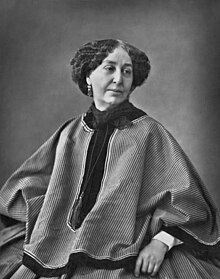
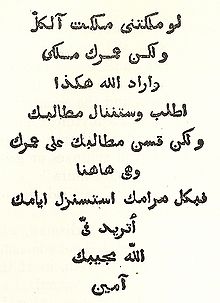

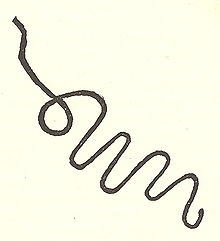


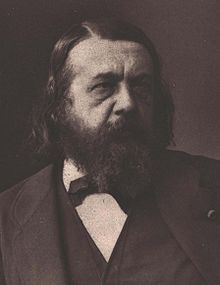
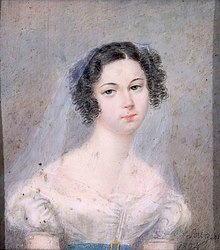

Adrien MoreauHonoré de BalzacLa Comédie humaineFrenchshagreenwild asssequence of novelsfantasticrealisticbourgeoismaterialismEwelina HańskaGiselher KlebeDie tödlichen WünscheBibliothèque de l'ArsenalVilleparisispotboilerpseudonymsfrancsLes ChouansBrittanyRevue de ParisLa CaricatureE. T. A. Hoffmanngothic fictionAnn RadcliffeJules JaninCharles XJuly RevolutionLouis-PhilippeAncien RégimeOrientalNapoleonPont RoyaloctavoGeorge SandEugène SueOlympe PélissierfeministJules SandeauArabicSanskritbanquetflashbackEugène de Rastignacspa townAix-les-Bainsperiwinklesupernaturalchemistphysicisthuman naturesocietynoms de plumesymbolismFélicien Marceaucase studieseverymanrealistrealismPalais RoyalNotre-Dame de ParisalludeGioachino RossiniTancrediVenus de Milogamblingeconomic materialismantiqueMoorishyataghanTartarsburgomastersCiceroAncient EgyptianEtruscanChinese dragonRaphaelJesus ChristLaurence SterneTristram ShandyautobiographicalglassesParis ObservatoryvitalismThe TransfigurationpanaceanamesakeChristianityThéophile GautierÉmile DeschampsCharles Forbes René de MontalembertJohann Wolfgang von GoetheCharles PhiliponGrandvillesequenceLouis LambertUkrainebaronessVolhyniaOdessaBerdychivLe Père GoriotrealpolitikVautrinL'Auberge rougecharacterizationArthur Conan DoylelibrettoFritz GeißlerGünther DeickeYuri KhanonballetThe Shagreen Boneinterludebiographicpseudo-documentaryOscar WildeThe Picture of Dorian GrayAlbert CapellaniHenri DesfontainesThomas A. Edison, IncMabel TrunnelleBigelow CooperDennis Neilson-TerryGeorge D. Baker